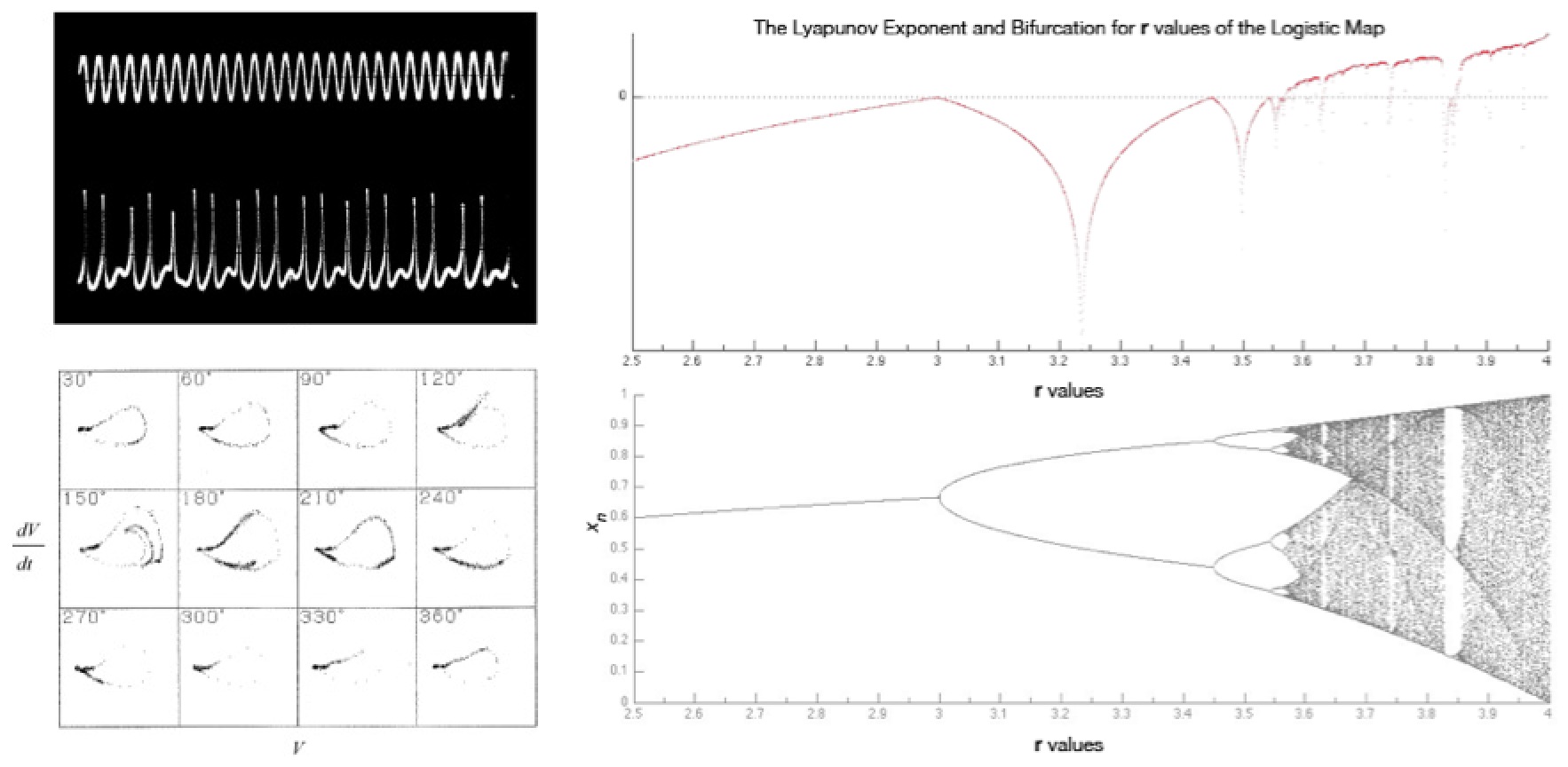The original question was:
“Furthermore, you say, science will teach men (although in my opinion a superfluity) that they have not, in fact, and never have had, either will or fancy, and are no more than a sort of piano keyboard or barrel-organ cylinder; and that the laws of nature still exist on the earth, so that whatever man does he does not of his own volition but, as really goes without saying, by the laws of nature. Consequently, these laws of nature have only to be discovered, and man will no longer be responsible for his actions, and it will become extremely easy for him to live his life. All human actions, of course, will then have to be worked out by those laws, mathematically, like a table of logarithms, and entered in the almanac; or better still, there will appear orthodox publications, something like our encyclopedic dictionaries, in which everything will be so accurately calculated and plotted that there will no longer be any individual deeds or adventures left in the world.”
-Notes From Underground
I was wondering how these laws that Dostoevsky mentions could be catalogued. Assuming these laws that determine human behavior are indeed discovered, what could be done so that it would be easy to refer back to. If a possibility tree of some sort is devised it would be incredibly huge considering how slight adjusting of an action can completely change the result in the long run.
Physicist: Dostoevsky was writing from a very 19th century point of view; the “clockwork model” of the universe had proved to be an shockingly effective way to think about how physical principles play out. Chemical and thermodynamic processes, complex machinery, and the motion of the planets themselves all followed extremely precise, predictable “scripts” that were being discovered in rapid succession. For a while there it was beginning to look like all of the laws underpinning reality would soon be revealed and that the seeming chaos of the universe would be brought to heel shortly after.
And Dostoevsky may have had a point about predicting human actions. With little more than our every movement, correspondence, interaction, and continuously updated high resolution pictures of us and everyone we’ve ever known, big data firms claim to be able to alter our opinions and compel us to buy things.
But there may yet be a little wiggle room for free will. It wasn’t until the 20th century, with the advent of computers and some fancy math, that we had the opportunity to grapple with complexity, chaos, and the nature of randomness.
Chaos theory says that many everyday systems are unpredictable, because errors compound exponentially. Tiny errors become small errors which become big errors which become a useless prediction. Even if you have infinite computers, if you don’t know the initial conditions perfectly, then there’s only so much you can do. Weather is the classic example of this. Even though we understand the underlying laws and dynamics very well, tiny perturbations become larger and larger and quickly swamp any attempt to accurately predict the future behavior of the system. In ten thousand years people will still be complaining about the local weather person (or clone or robot or hologram or whatever).
Chaos theory is relevant to us and our minds, because chaos is a trick that neurons picked up hundreds of millions of years ago. Sometimes it’s important to produce a very regular predictable pattern, like the aptly named “pace maker cells” that control the heartbeat of every creature with a beating heart. And consistency itself is important, for example if you’re a part of a society and those around you rely on that consistency. But often it’s useful to have a ready source of unpredictability. For example, if you need to run from an animal, it’s important to zig just as often and unpredictably as you zag. Hunters and foragers also need randomness for certain “I have no idea where to start looking” searches. Fortunately for us brain’d creatures, nerve cells are capable of chaotic behavior.

The chaotic nature of nerve cells implies (among other things) that when you inevitably meet a painting chimp, there’s no way to predict the quality of their art with certainty.
Noisy systems aren’t automatically chaotic. Chaos is rooted in inherent instabilities and a sensitivity to tiny changes. You can certainly have turbulence in water, but that doesn’t mean that fluid flow is necessarily chaotic (although it is sometimes). On the other hand, systems like a three armed pendulum or an LRC circuit with the capacitor swapped out for a diode (to add some non-linearity) are chaotic. We can detect the “signature of chaos” in these systems and in the responses of cells and groups of cells.
In particular we find that these systems will respond to periodic (repeating) inputs with an aperiodic output; they continuously throw themselves out of step and never quite return to the same state. Even more symptomatic, as with other chaotic systems, nerve cells demonstrate bifurcation before they become chaotic. As some parameter in the driving signal is increased, the neurons will follow patterns that take two cycles to complete, then four, then eight, and so on, with each bifurcation occuring sooner than the one before until they never repeat at all and become officially chaotic.

Upper Left: A sinusoidal driving voltage and the response of a single squid neuron. Lower Left: Each box is the voltage vs. rate of change in the voltage at the same point in the cycle recorded over and over and over. Non-choatic patterns produce only one or a few dots because the pattern repeats (nearly) perfectly. Lower Right: The stable points in the logistic graph (a very simple mathematical chaos model) vs. a changeable parameter, “r”. Upper Right: When the “Lyapunov exponent” (a measure of instability) is negative the system is self-stablizing and repeating. When the Lyapunov exponent is positive the system is chaotic and never repeats. For chaotic systems, the approach and “transition to chaos” is usually pretty clear.
So there’s a good chance that brains are like weather, with climates of mentality, El Ninos of mood, and flash floods of thought. And of course, predictable monsoons of commerce. But while it may be possible to predict that it’s likely to rain tomorrow and you’re likely to buy an umbrella, it’s probably impossible to predict your dreams. Remembering the way someone ate a sandwich weird, fifteen years ago, may be one of those outcrops of chaos your brain is capable of creating. A song that always made you cry suddenly becoming funny may be as impossible to predict five seconds out as a tornado five months out.
On the other hand, we may be clockwork. It’s hard to directly correlate the chaotic nature of isolated groups of neurons with the ever-changing large-scale behavior of people.
So here’s the point: like weather, your moment-to-moment thoughts and actions are yours alone. Perfect prediction of a person is likely to be impossible, because neurons are capable of truly chaotic behavior. That means that even with an atom-perfect brain scan, if the brain is chaotic, then its behavior can’t be predicted for long.
But like climate, a gross estimate of your behavior can be pretty accurate. There are general rules, varying from person to person (which we may as well call “personality”), that can be used to roughly predict how someone will behave. So far, the techniques that seem to work best are “getting to know someone real well” and “machine learning”. Get a big computer to stare at lots of people as much as possible, and those behaviors it is capable of observing, it becomes somewhat good at then predicting (assuming those behaviors are predictable).
Unfortunately, machine learning algorithms tend to be “black boxes”; they work, but nobody can really say what the algorithm is doing. It’s a little like a chef “just knowing” when to take the cake out of the oven beacuse they’ve had lots of experience. In that sense there’s already a personalized digital “Approximate Dostoevsky Almanac” that can predict, with some accuracy, what you’re likely to do (and buy), but nobody can read it. Even if, in theory, our brains are predictable, the almanacs we’re writing don’t mean much to those same brains.





















